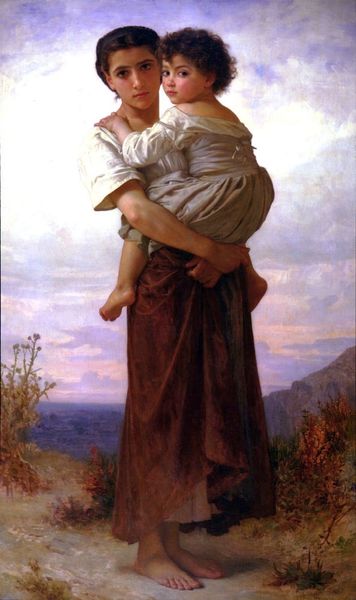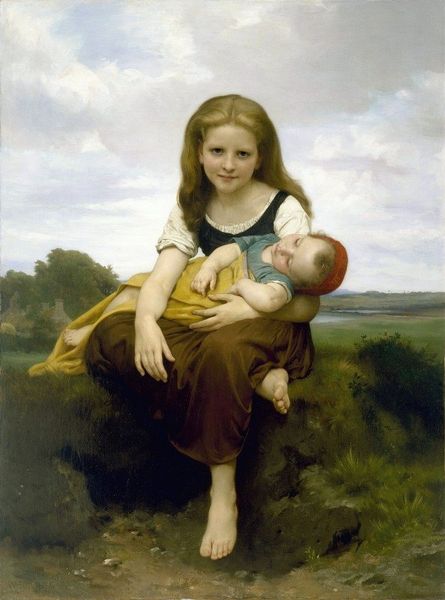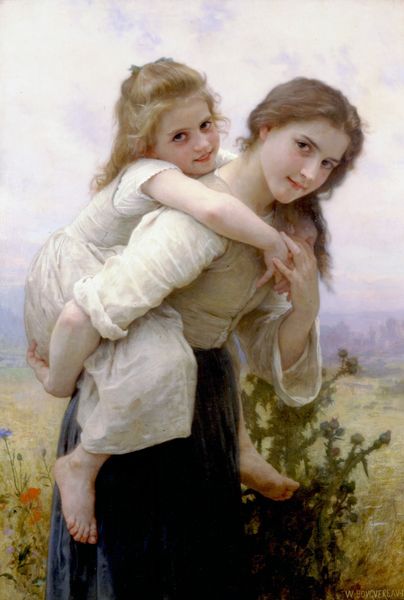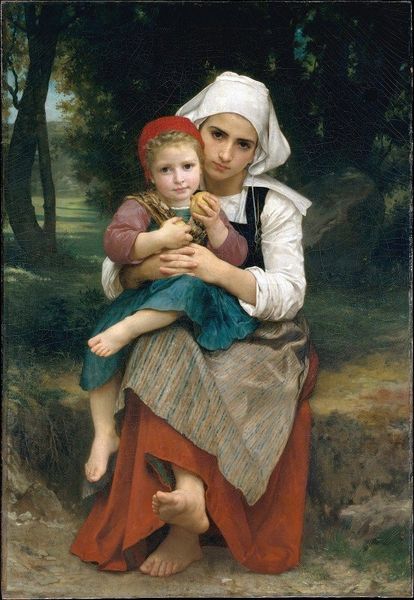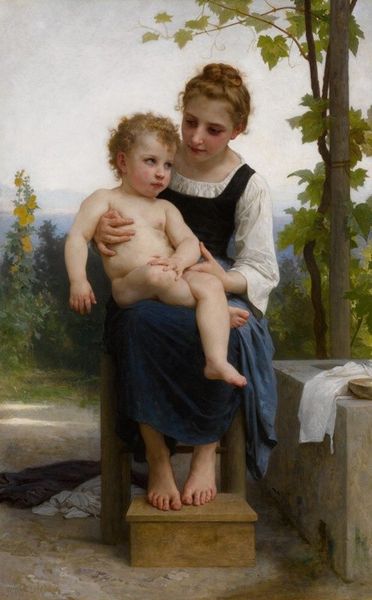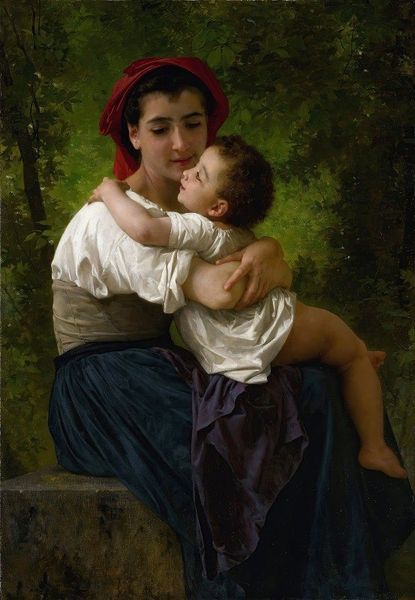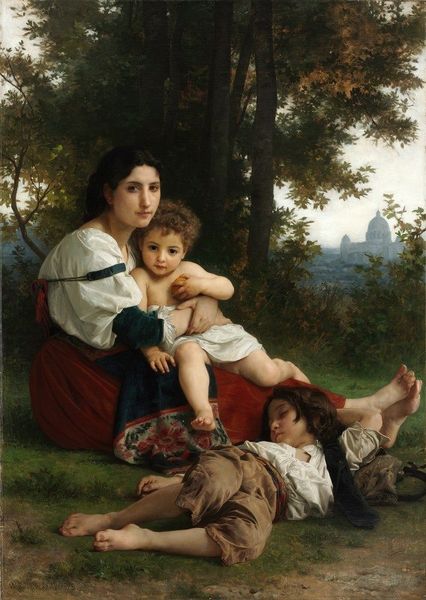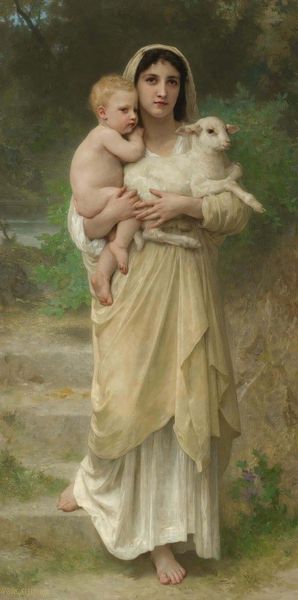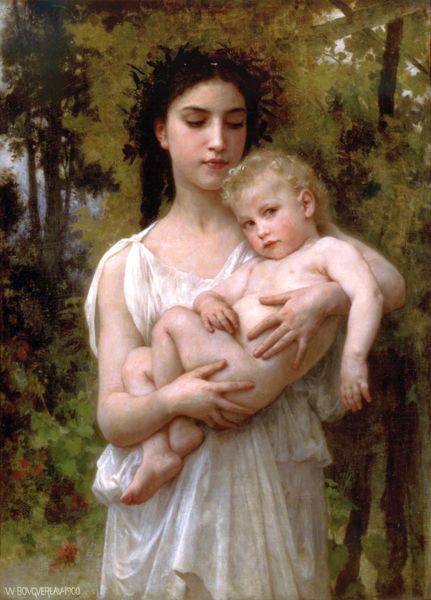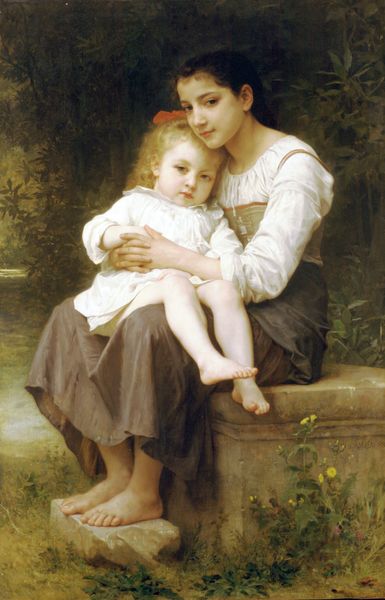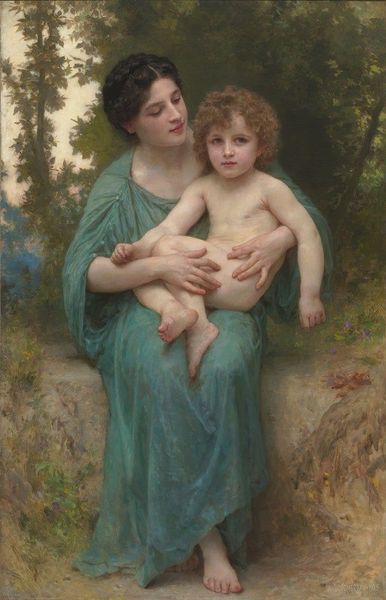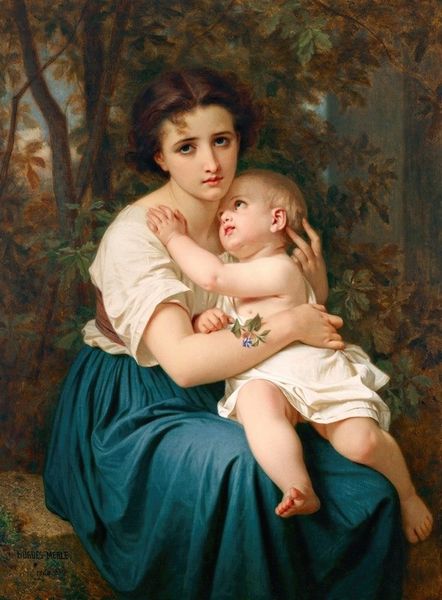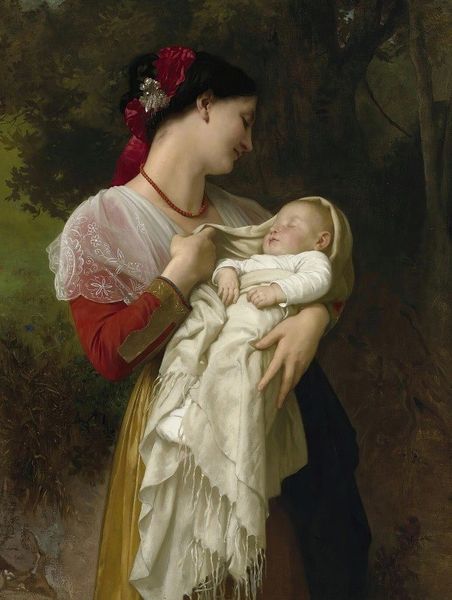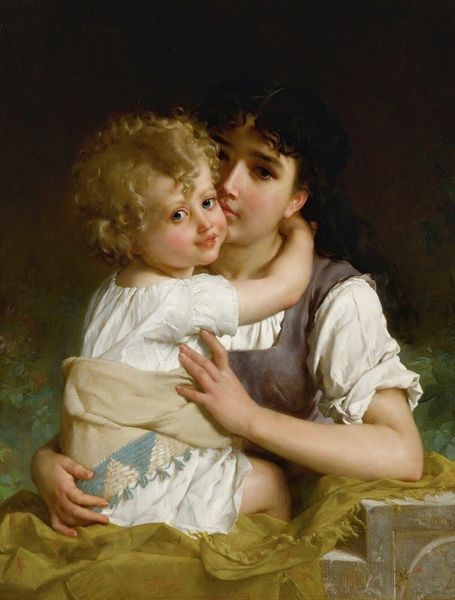
Copyright: Public domain
Editor: Here we have "Crossing the Stream," a painting by William Bouguereau from 1903, done with oil paint. It's such a sweet scene. The young woman and child have such smooth skin. What do you make of this idyllic image? Curator: This work, like many of Bouguereau's paintings, idealizes rural life, but I think it is also valuable to consider its construction. Note the smooth finish of the oil paint. It presents a contrast to the roughness of labor inherent in the subject. Editor: Right! Her clothing, while colorful, looks very simple, suitable for practical use, while his skill creates a sheen on them. What's the effect of this disconnect? Curator: This highlights the artist's choices in material presentation, concealing, and revealing labor. How does Bouguereau make the realities of rural women palatable to the Salon audience, perhaps even masking economic disparities? Does it function almost as a product advertisement, evoking nostalgic feelings towards idealized simpler times? Editor: So, even while it's painted in the style of realism, it glosses over a lot of the difficult, material realities that would’ve shaped these people’s lives? Curator: Precisely. It compels us to examine the labor involved in both the scene depicted, as well as the means of its production. He makes paintings marketable to the French upper classes with particular aspirations and tastes. I wonder what that reveals? Editor: I see. So much thought went into portraying such an apparently straightforward moment. Thinking about the choices of materials and the social context really adds layers to the work. Curator: Indeed, this painting acts as a tangible connection between those distant modes of labor and our own consumption of art.
Comments
No comments
Be the first to comment and join the conversation on the ultimate creative platform.
